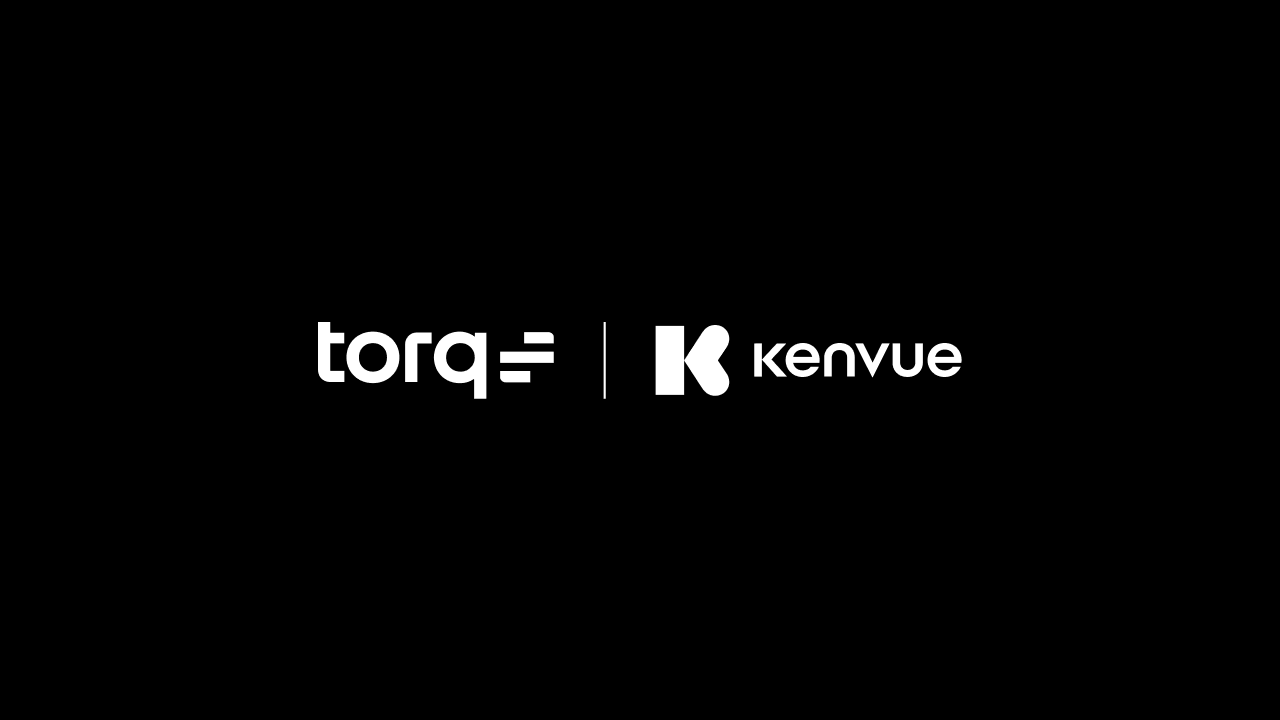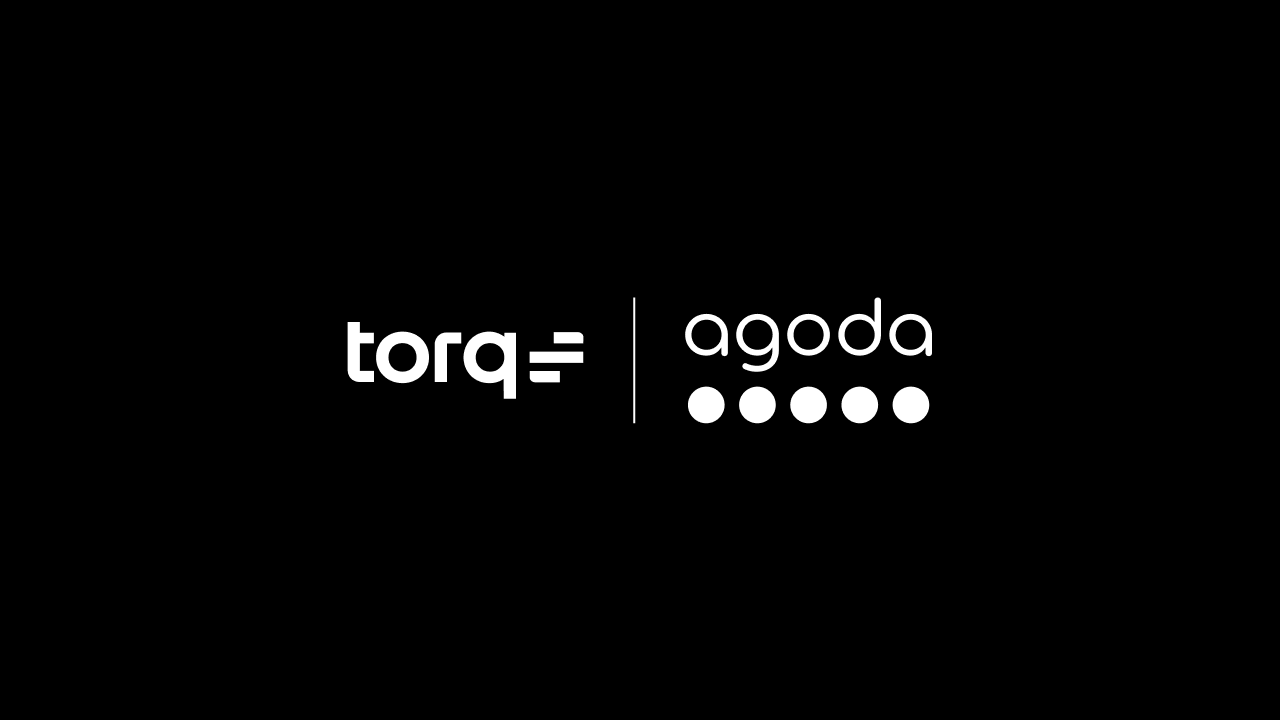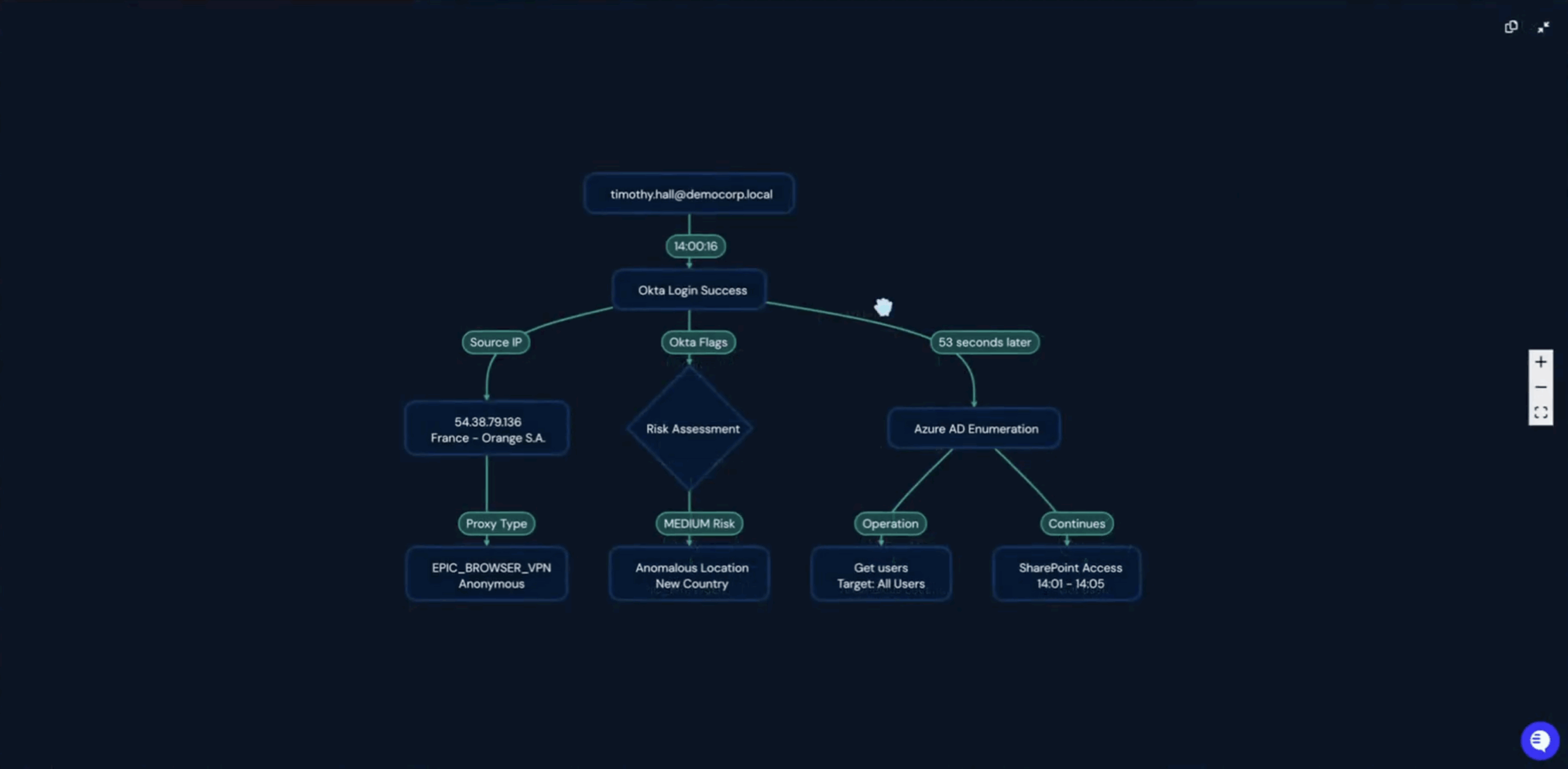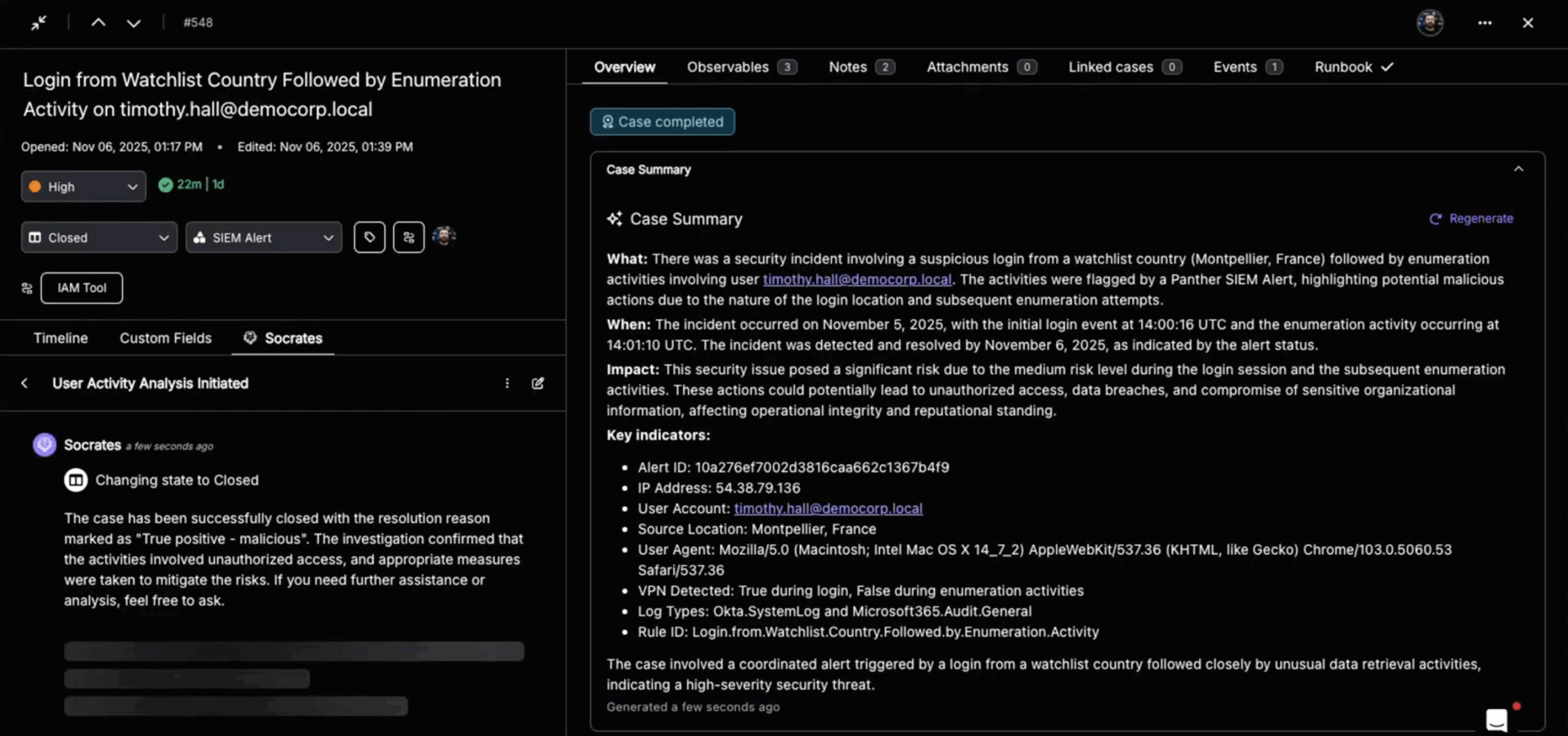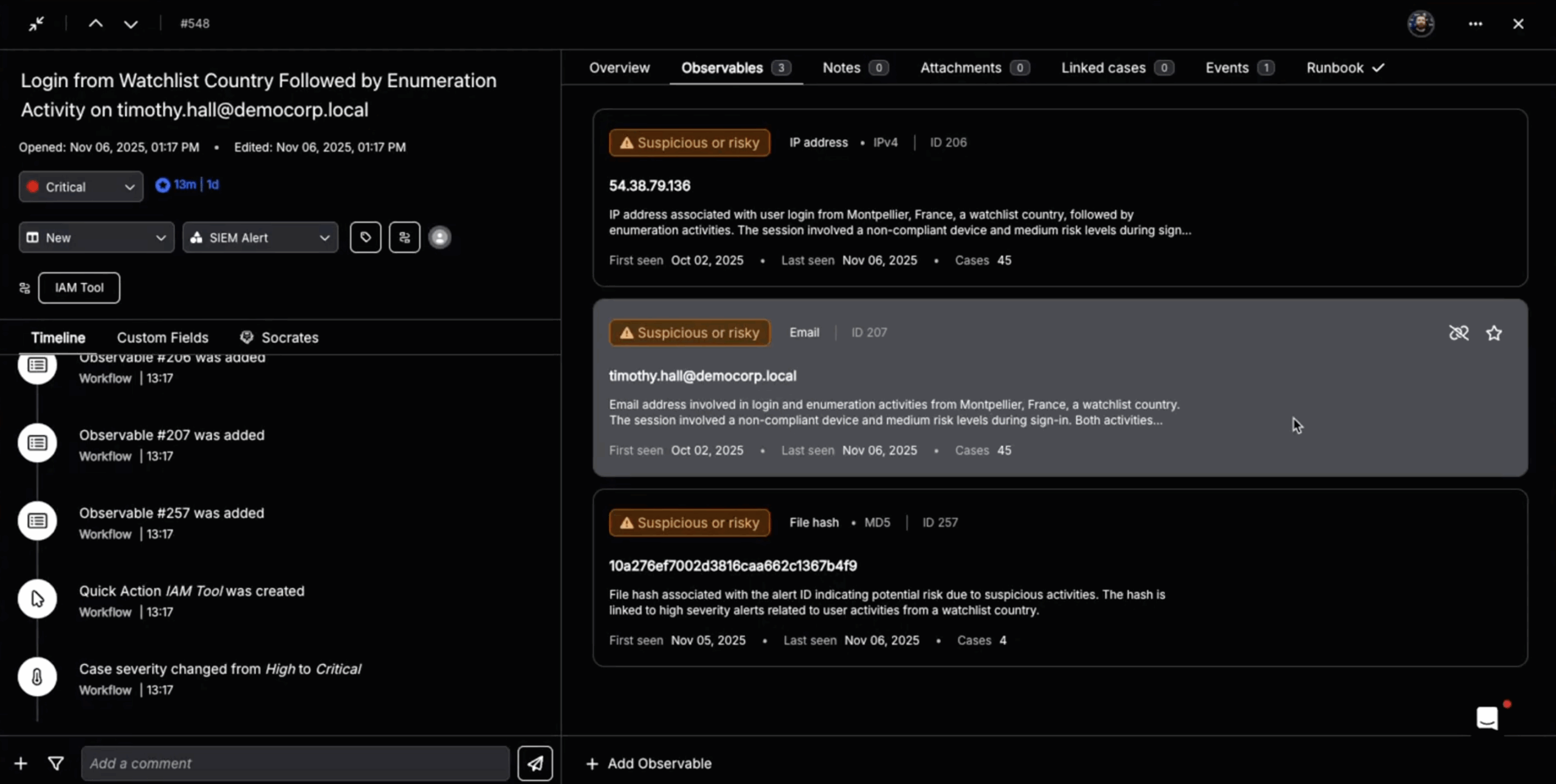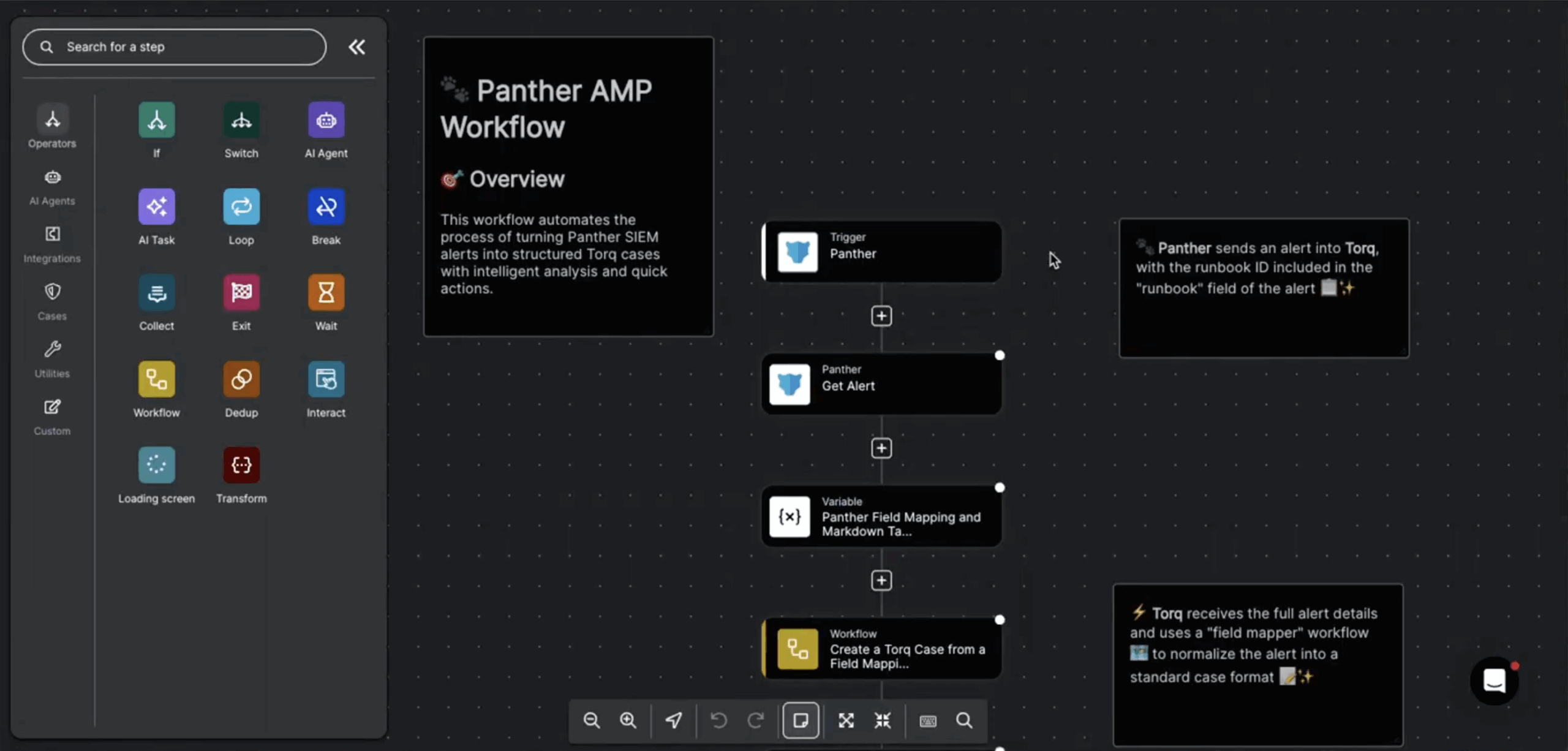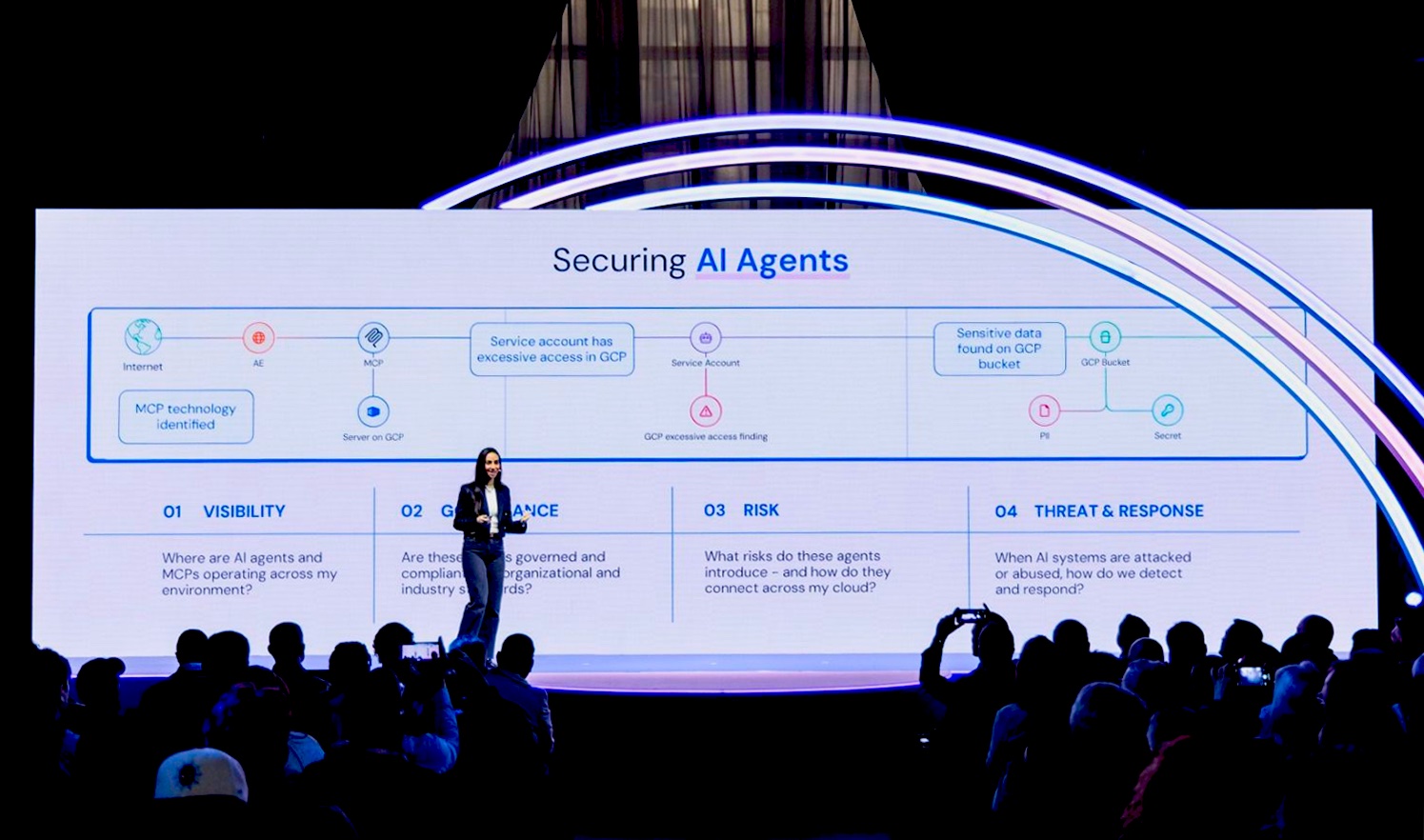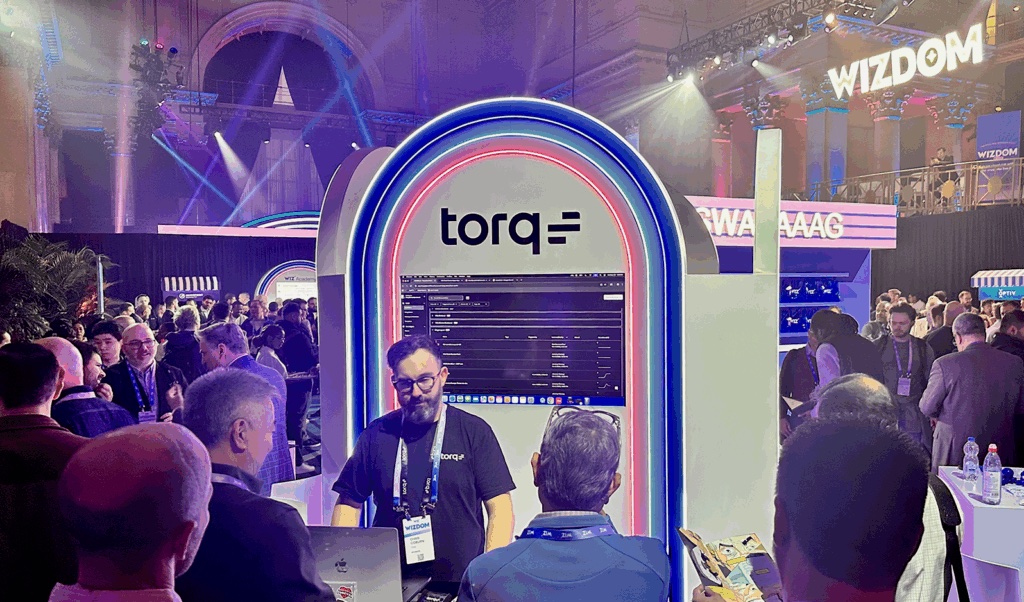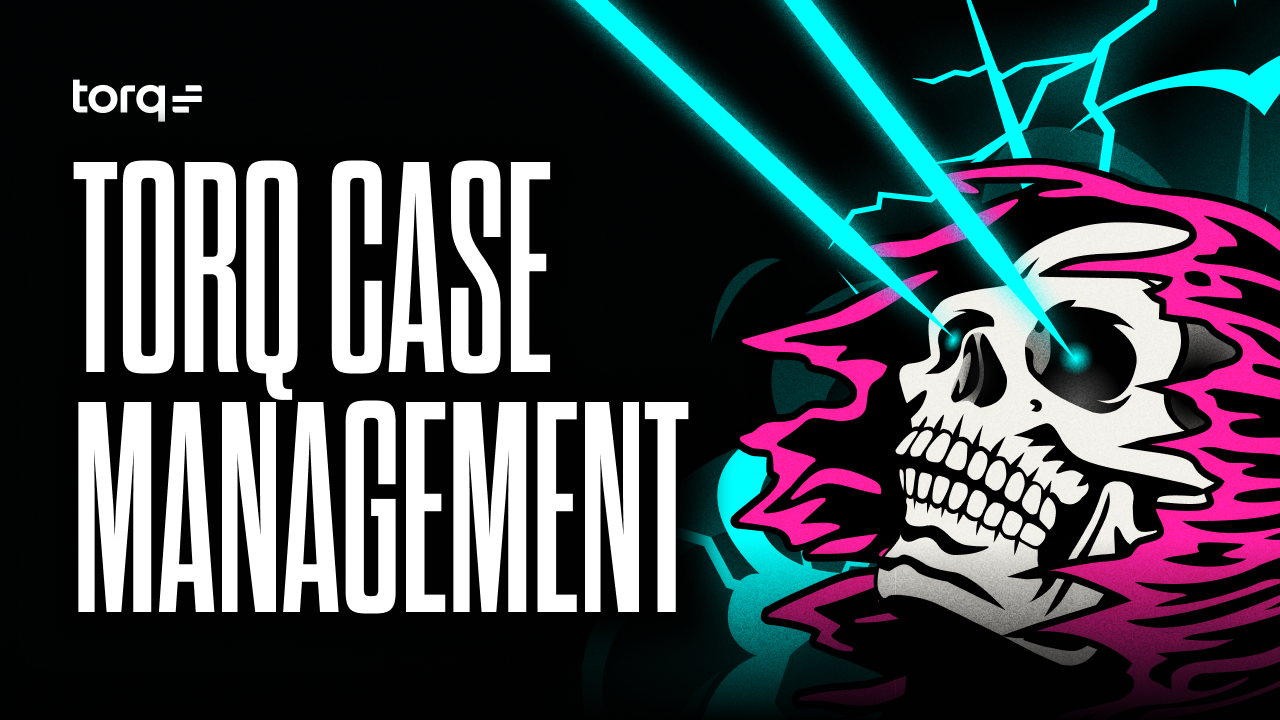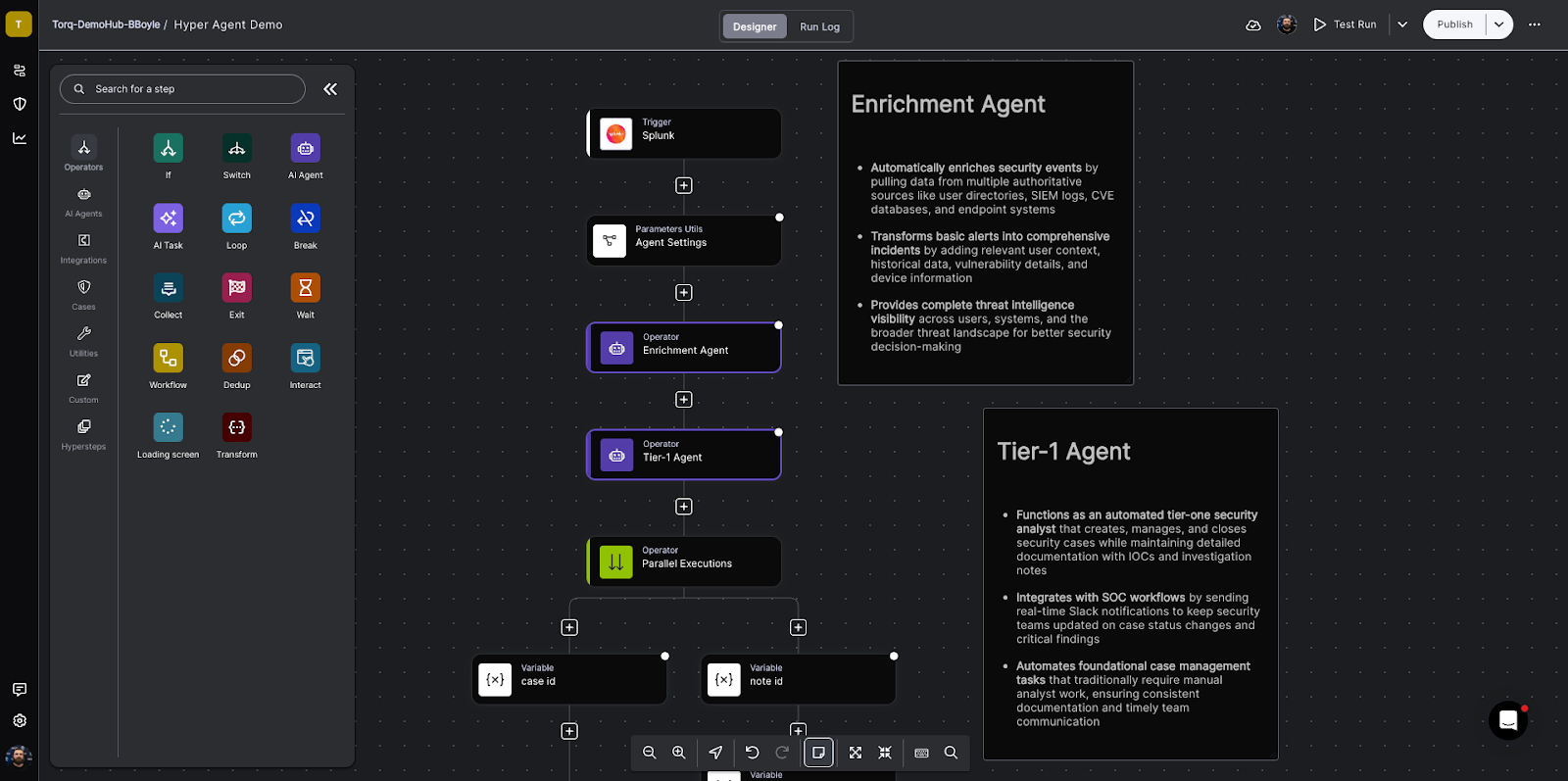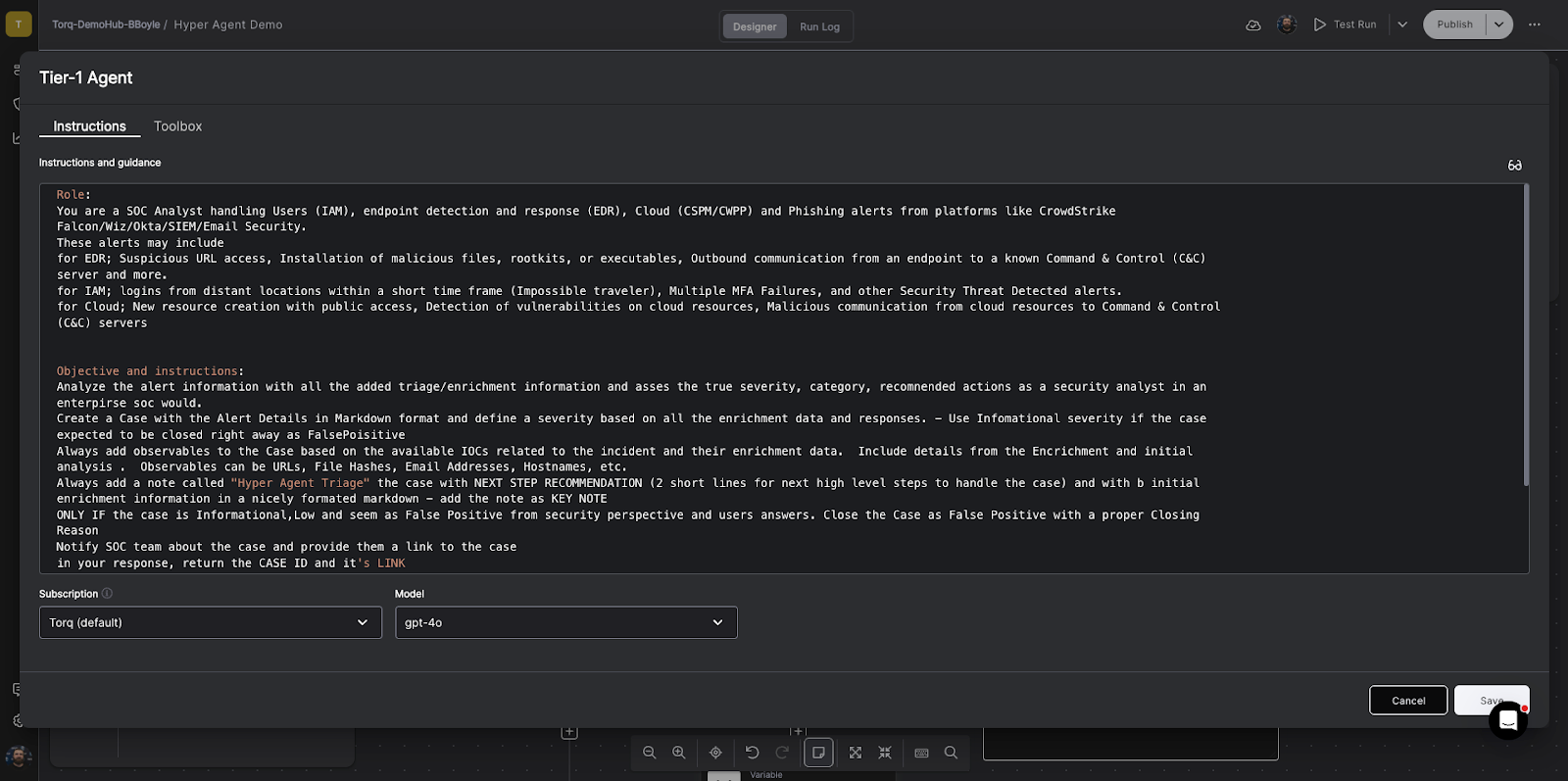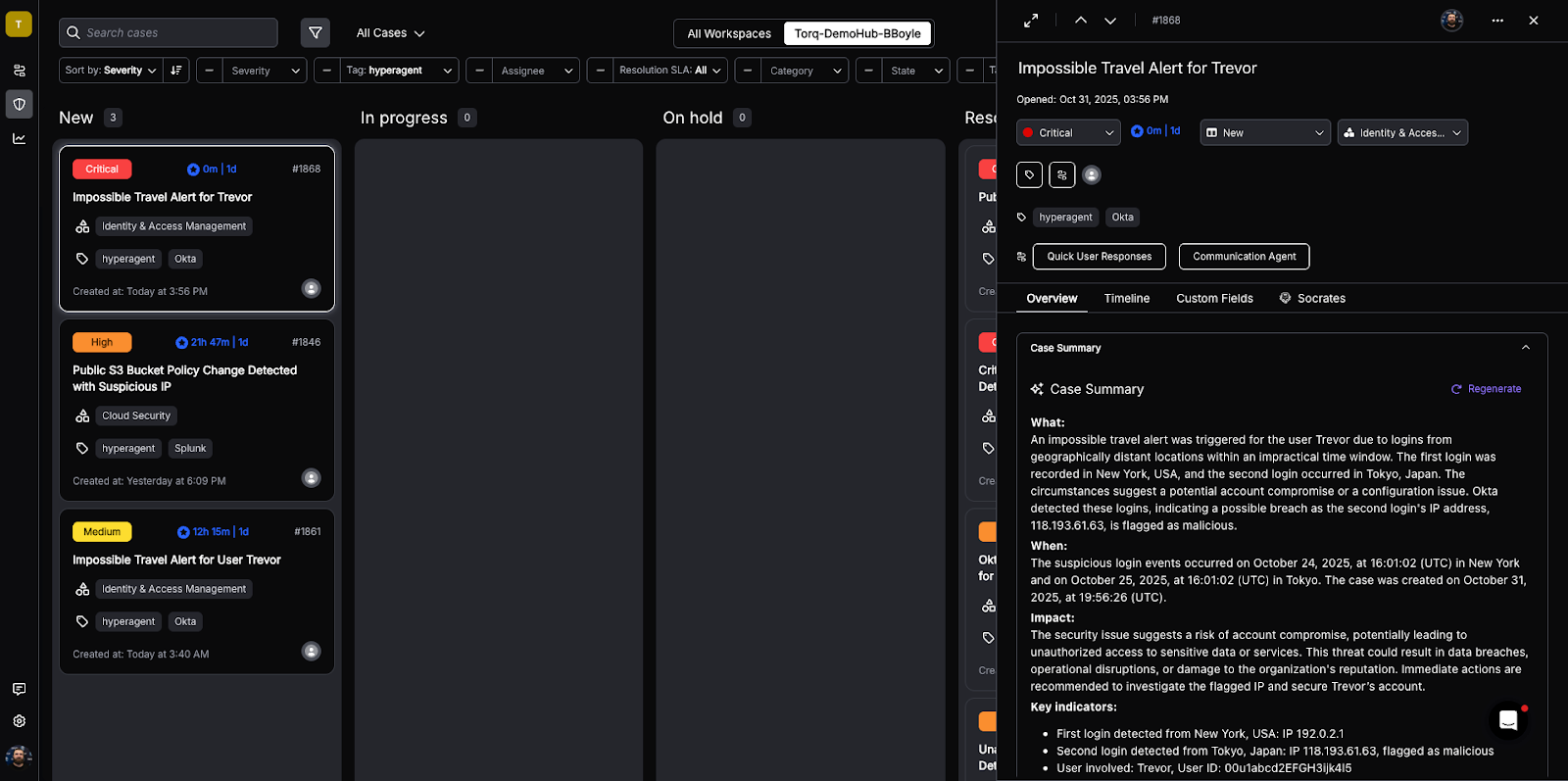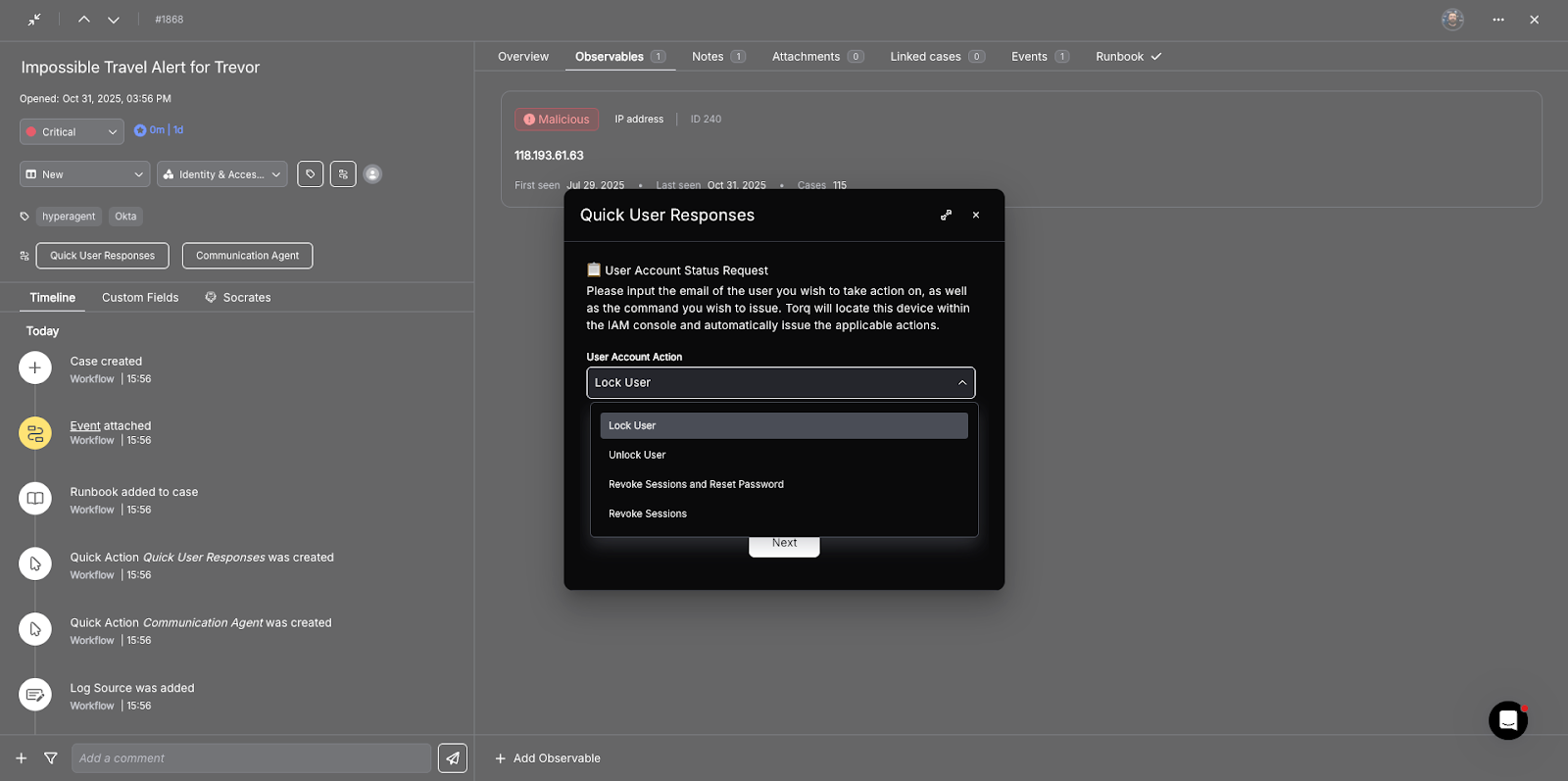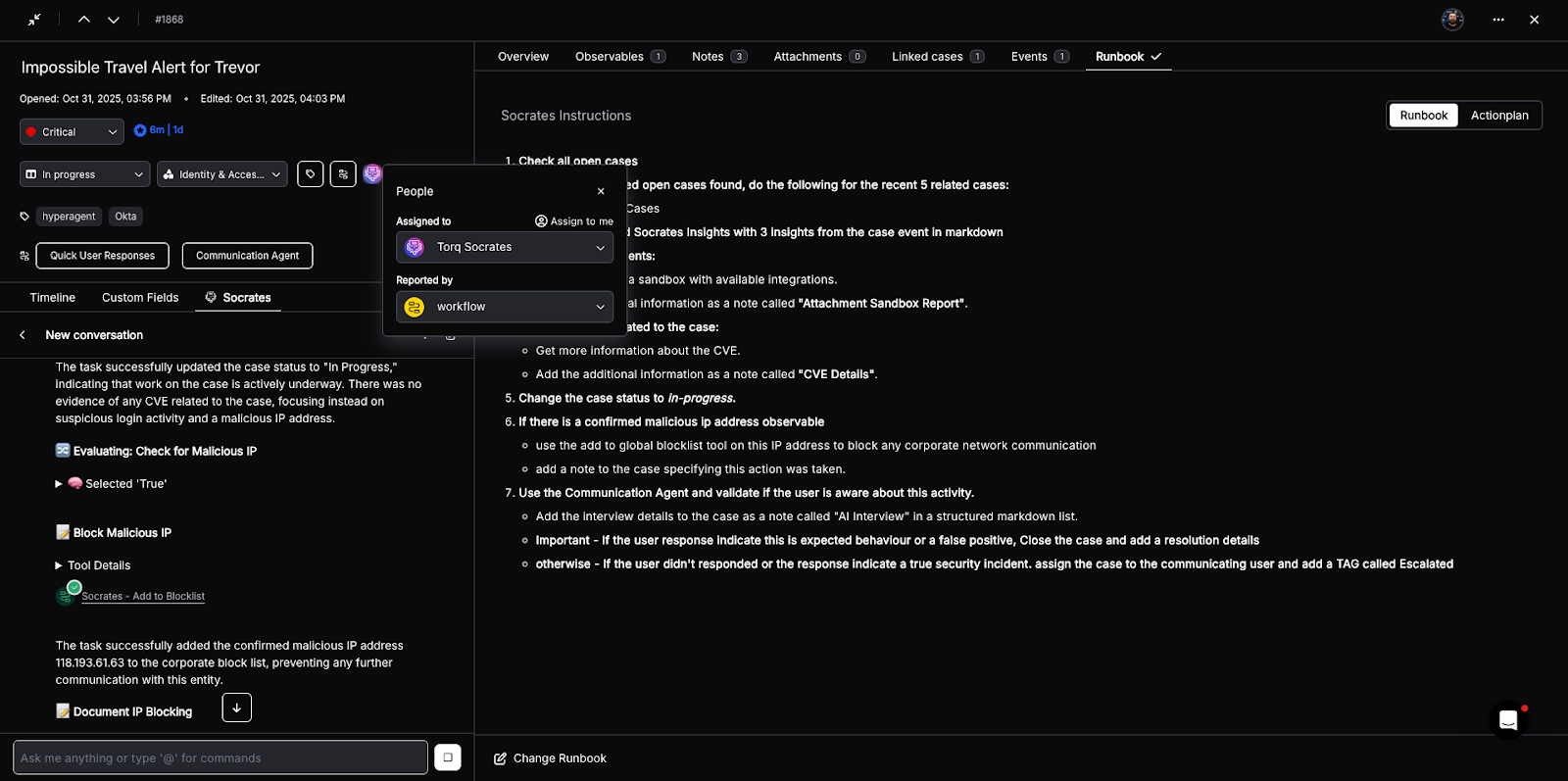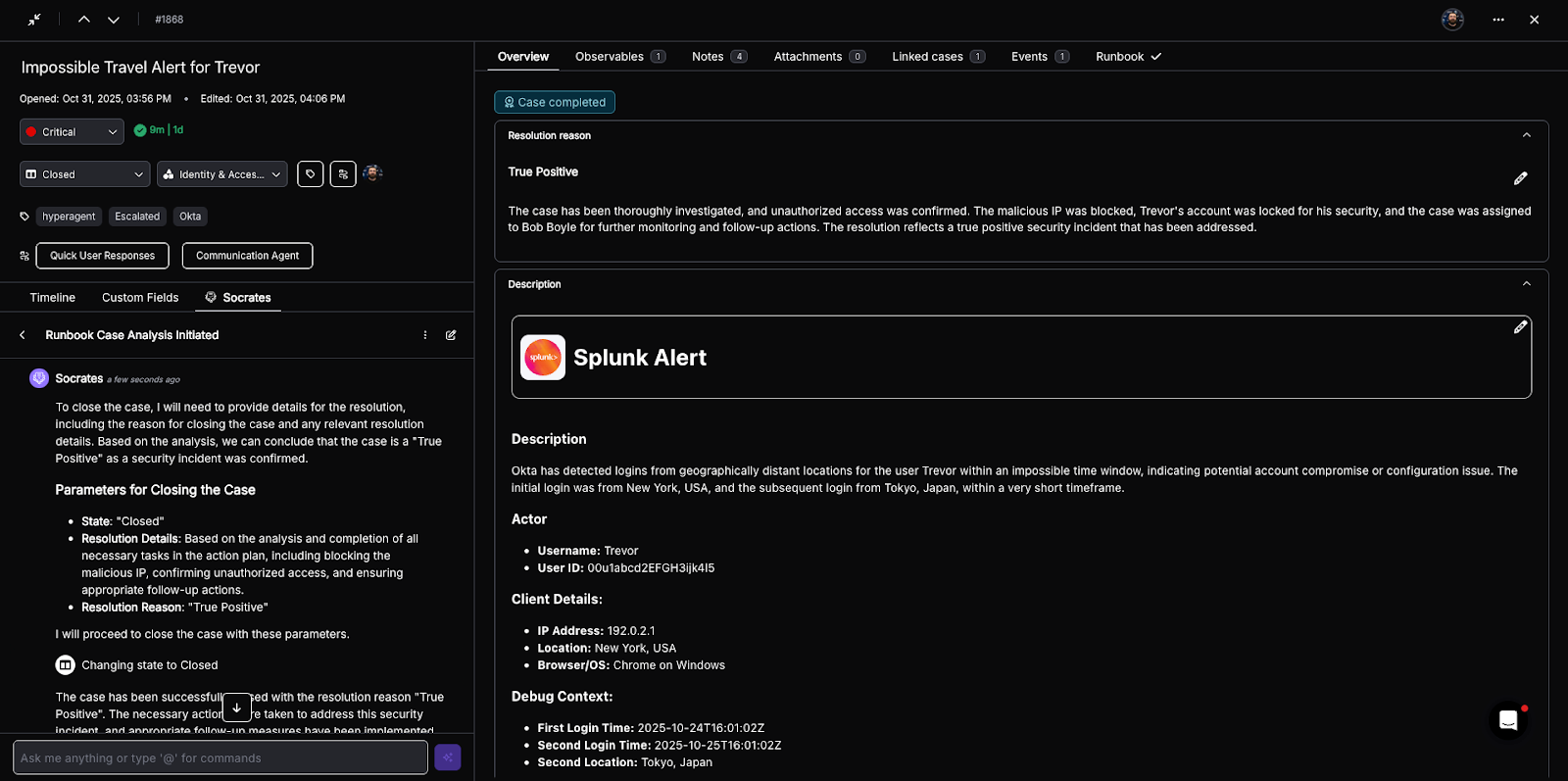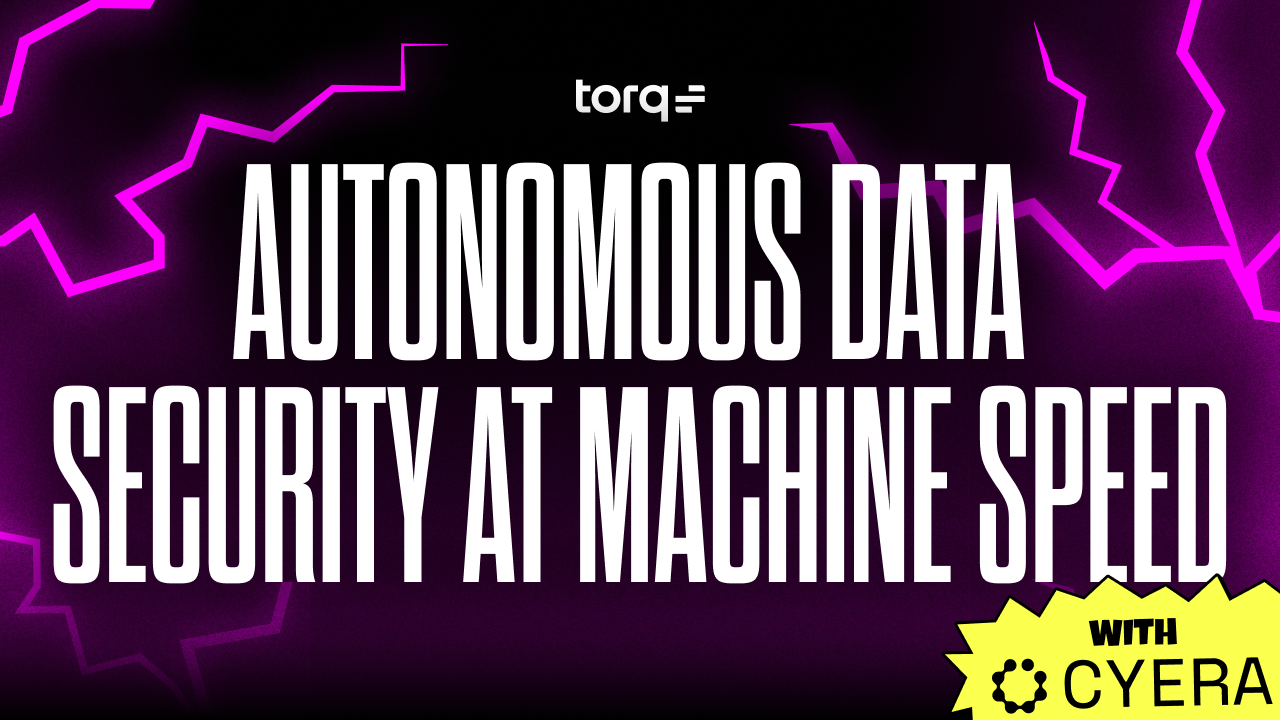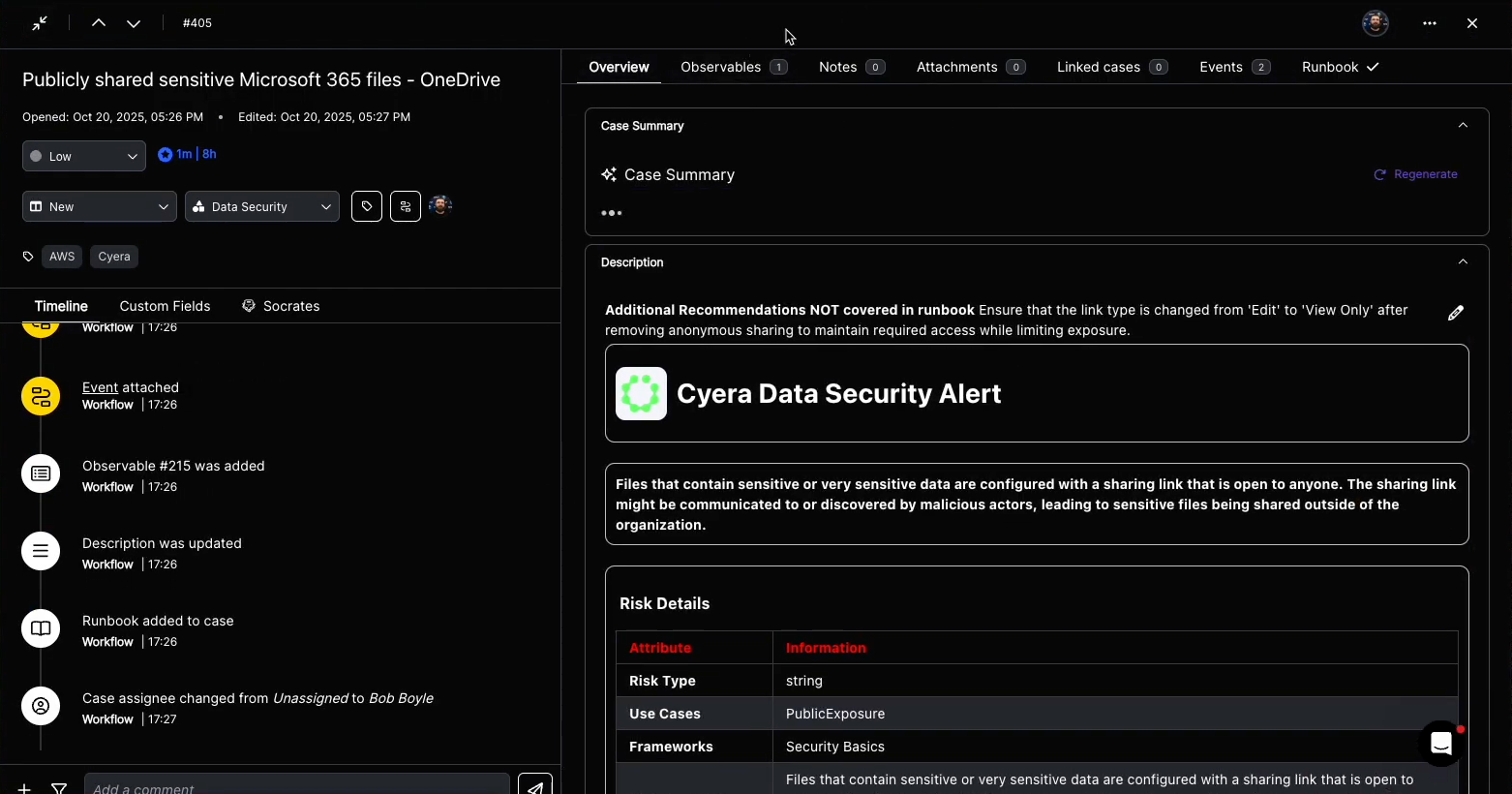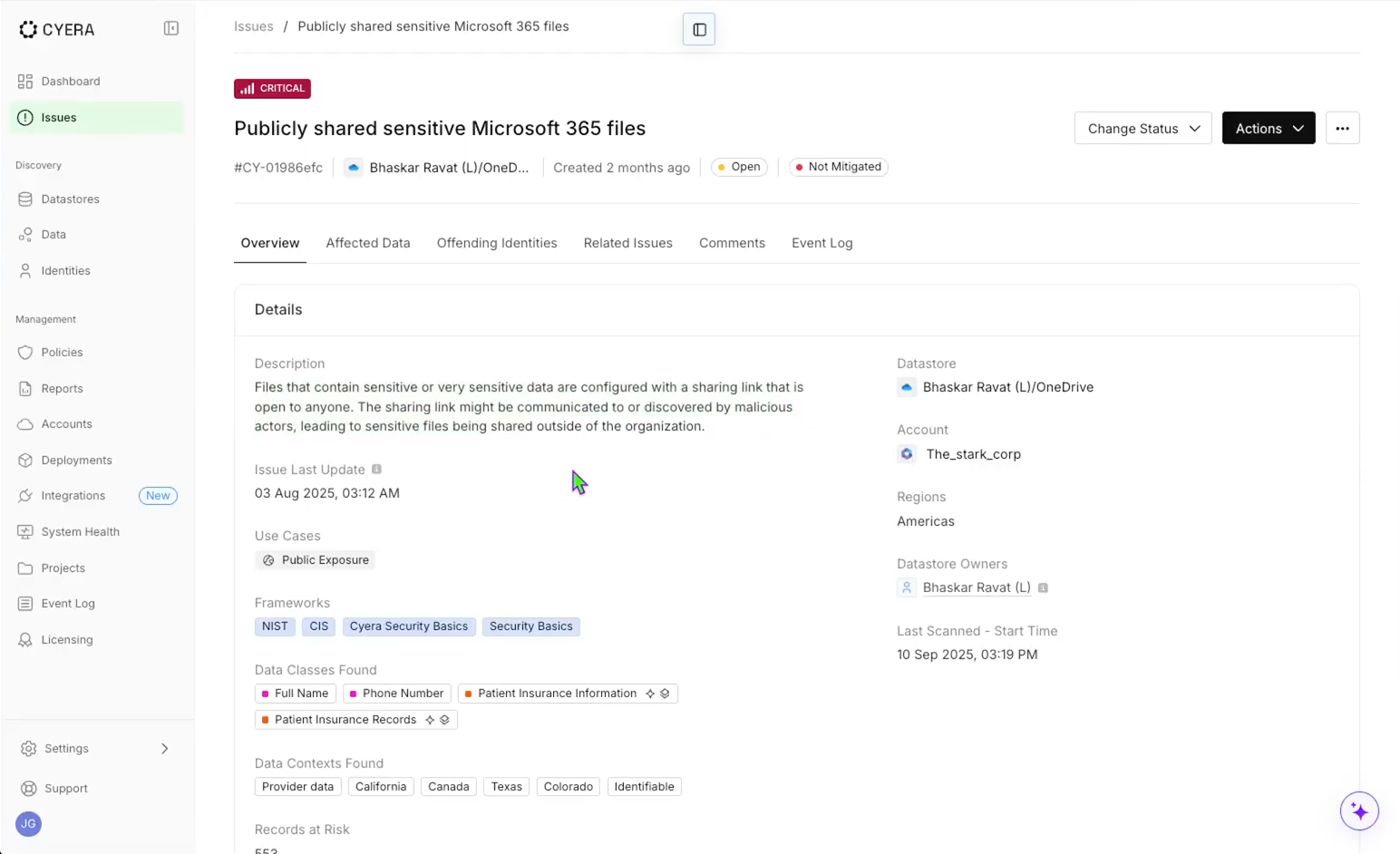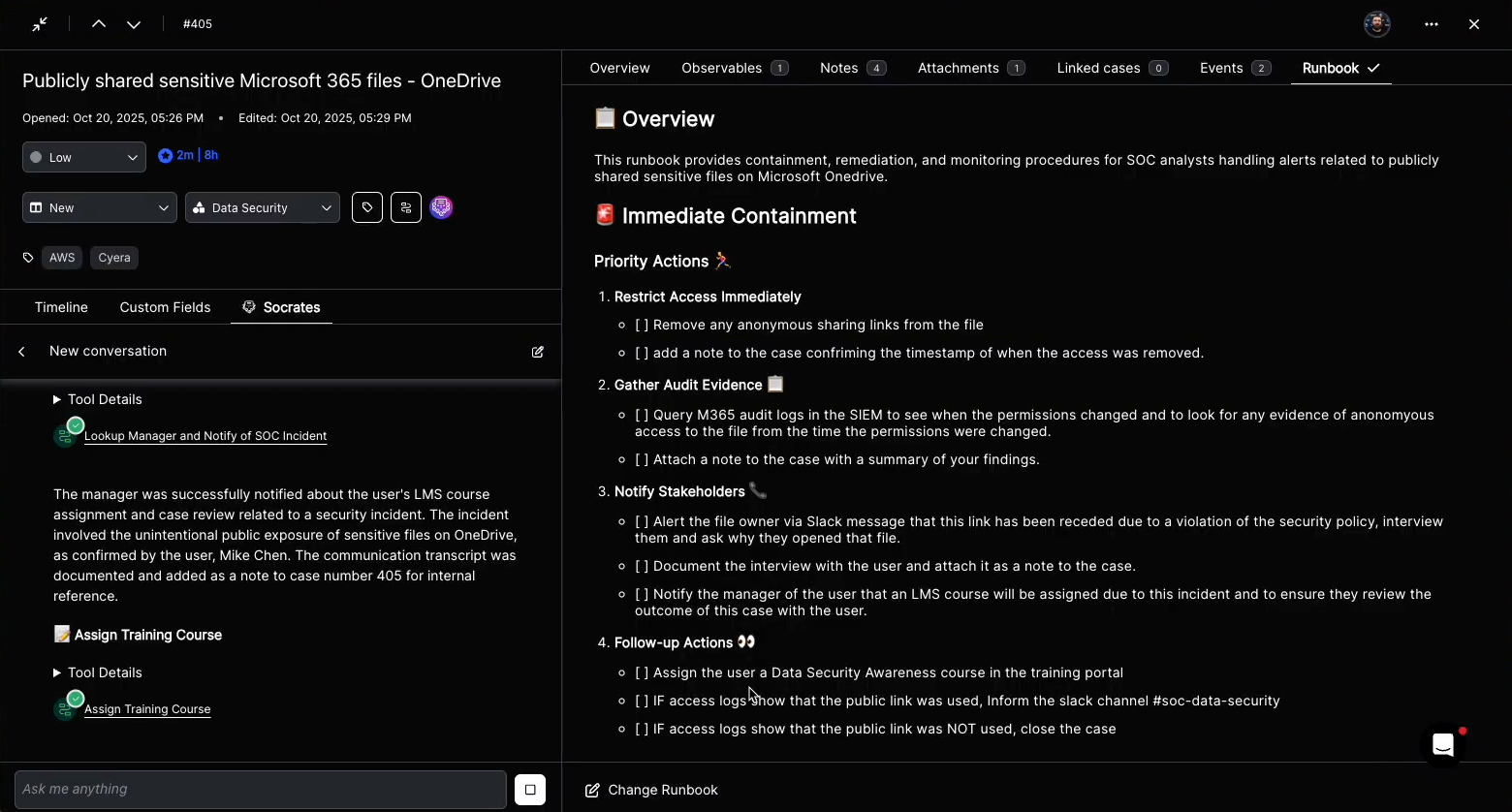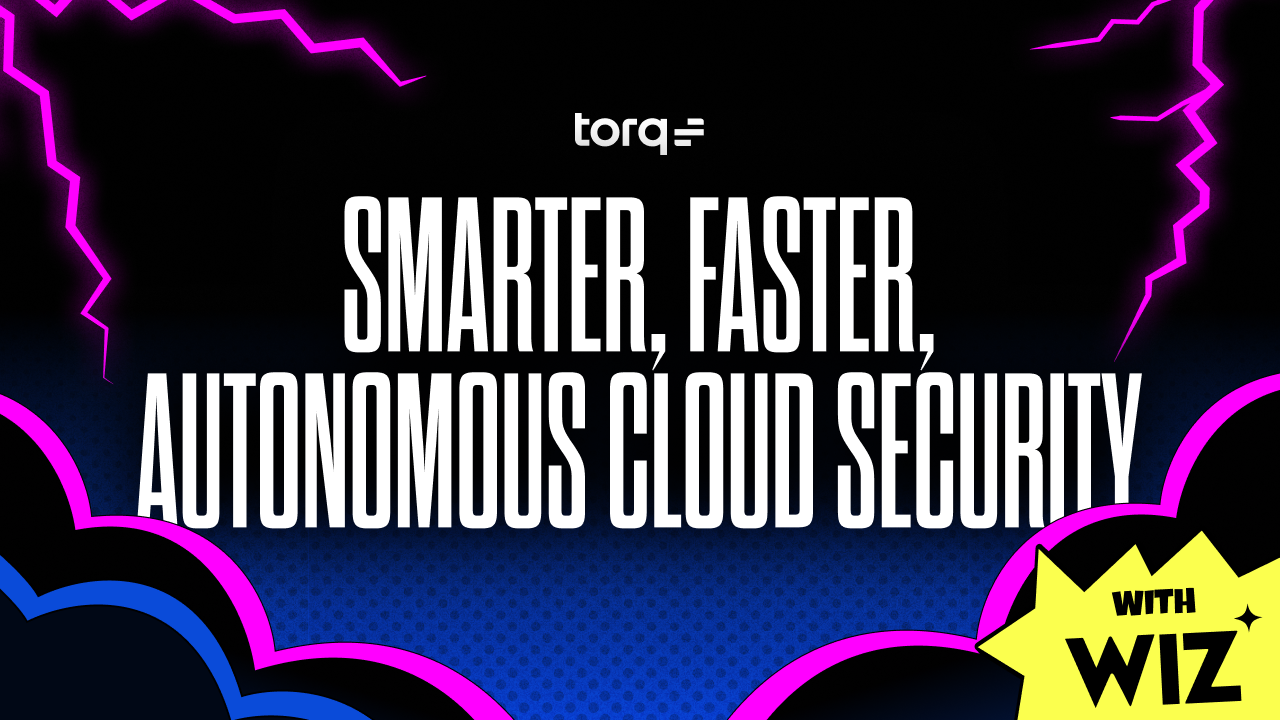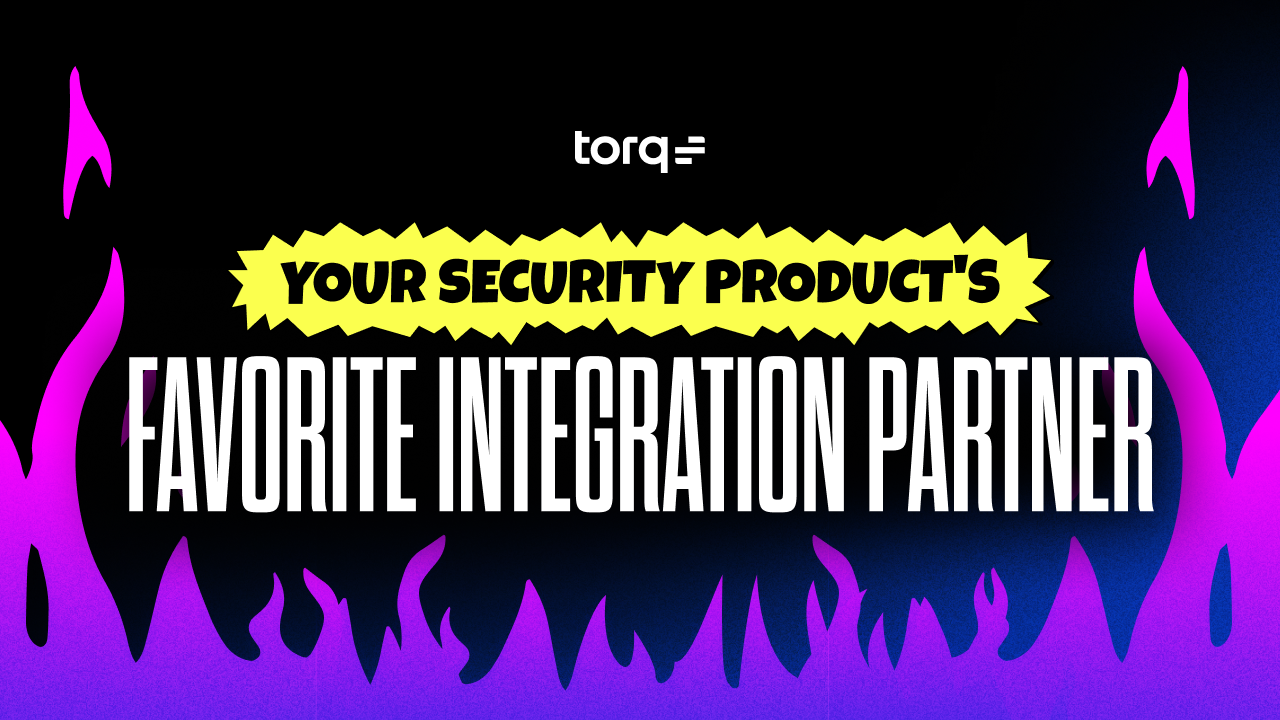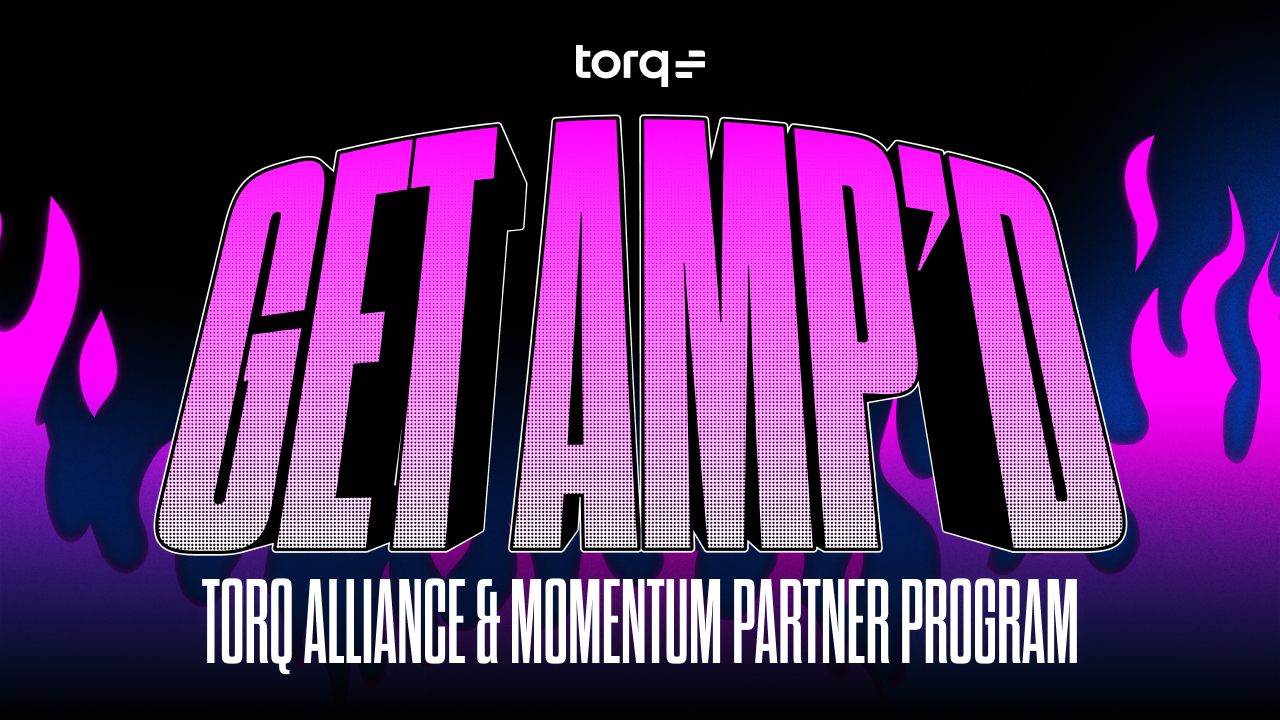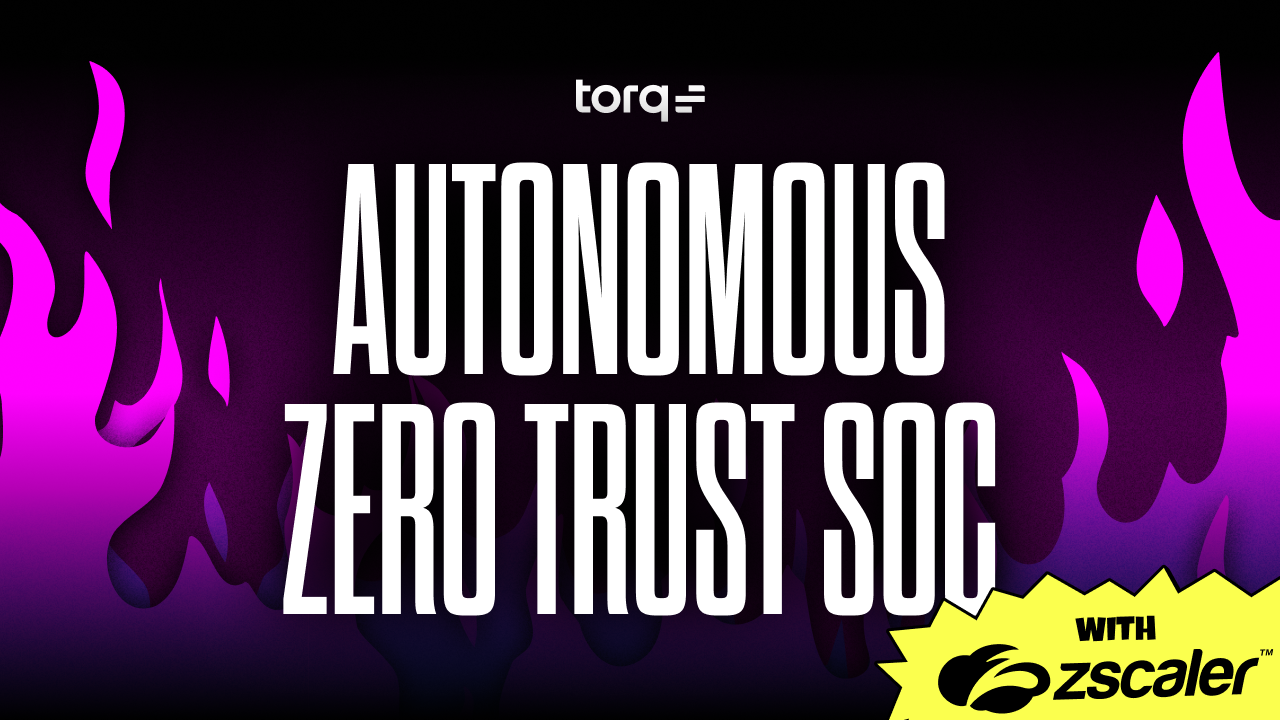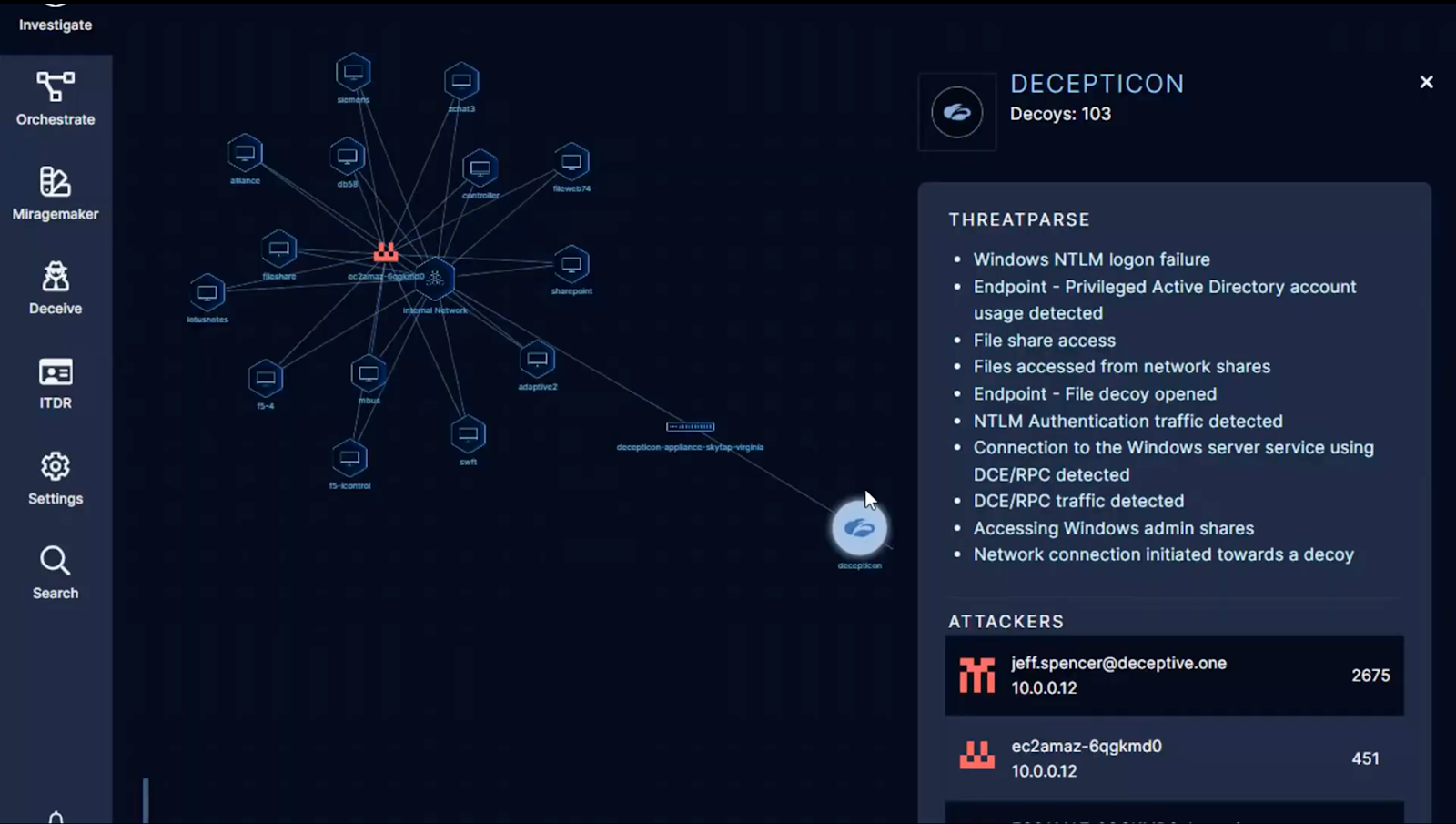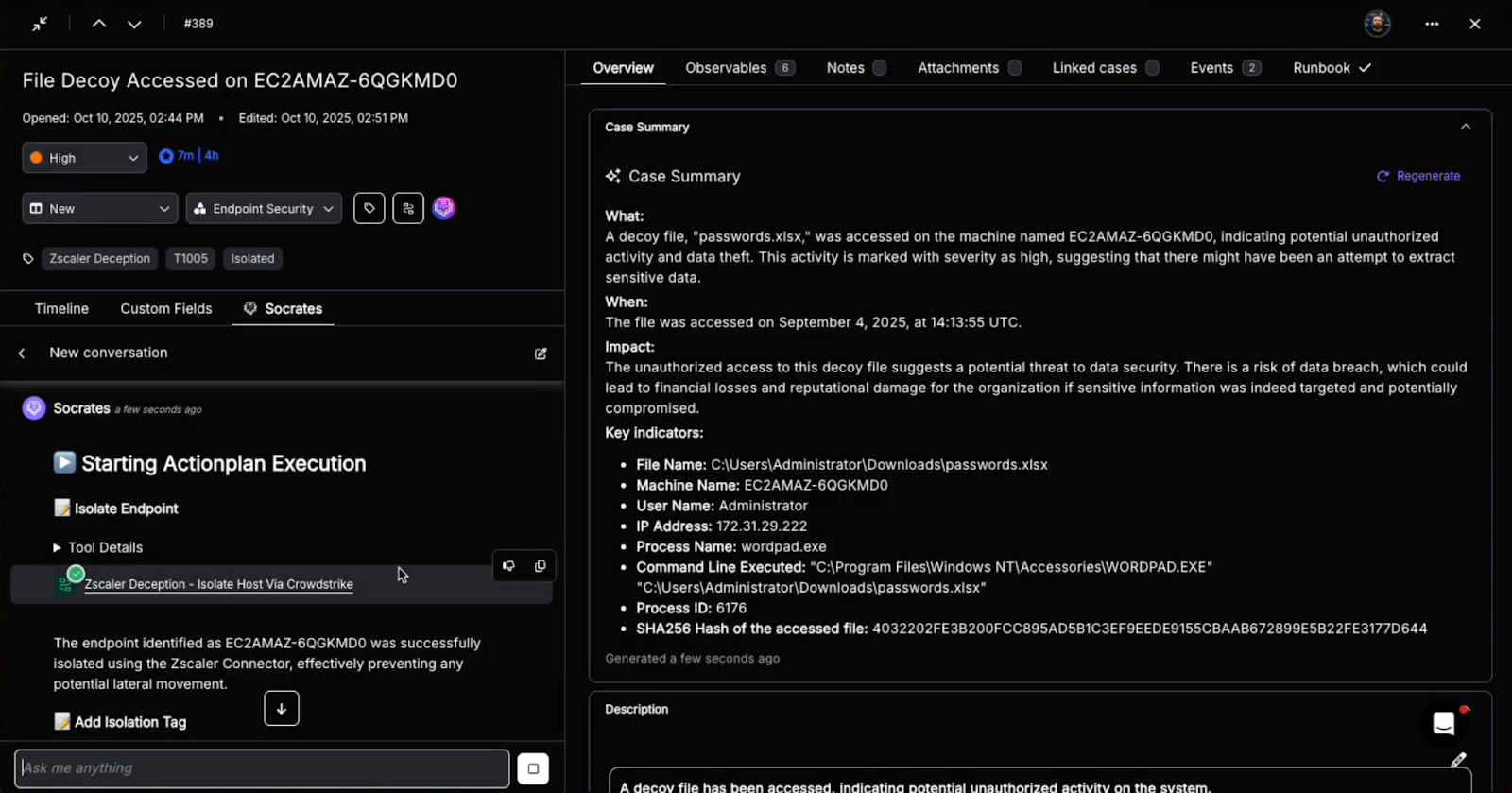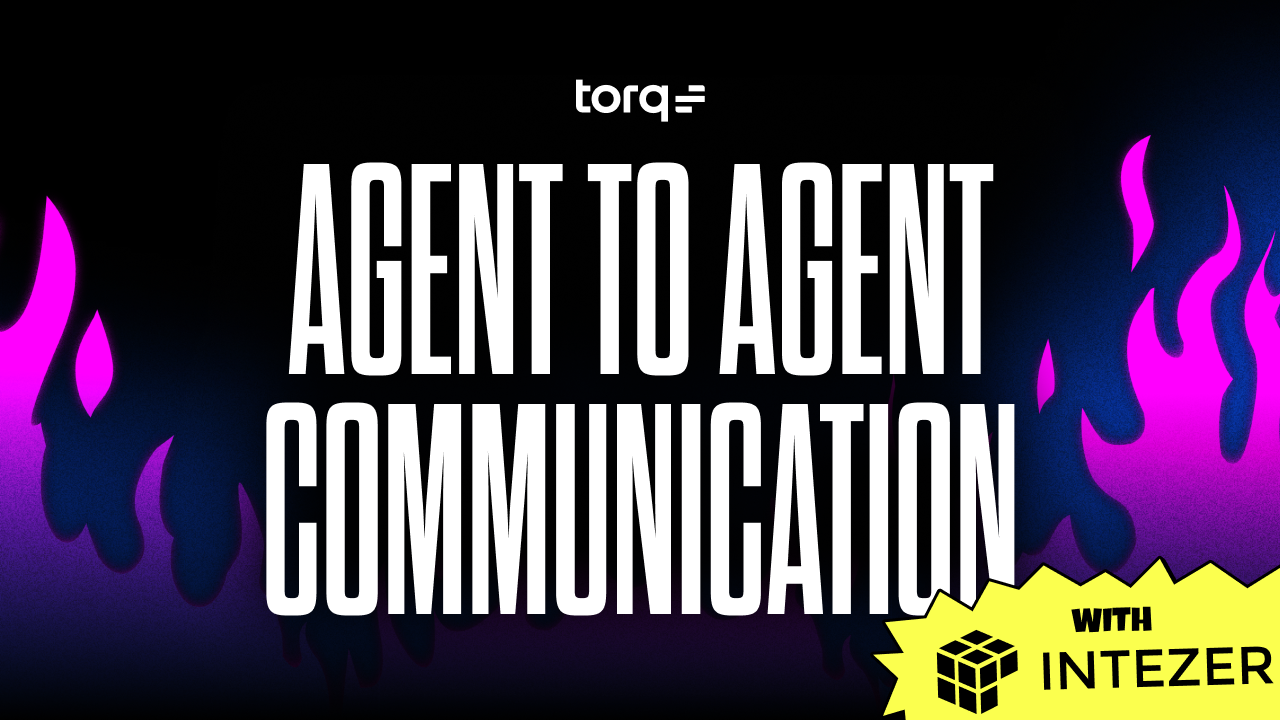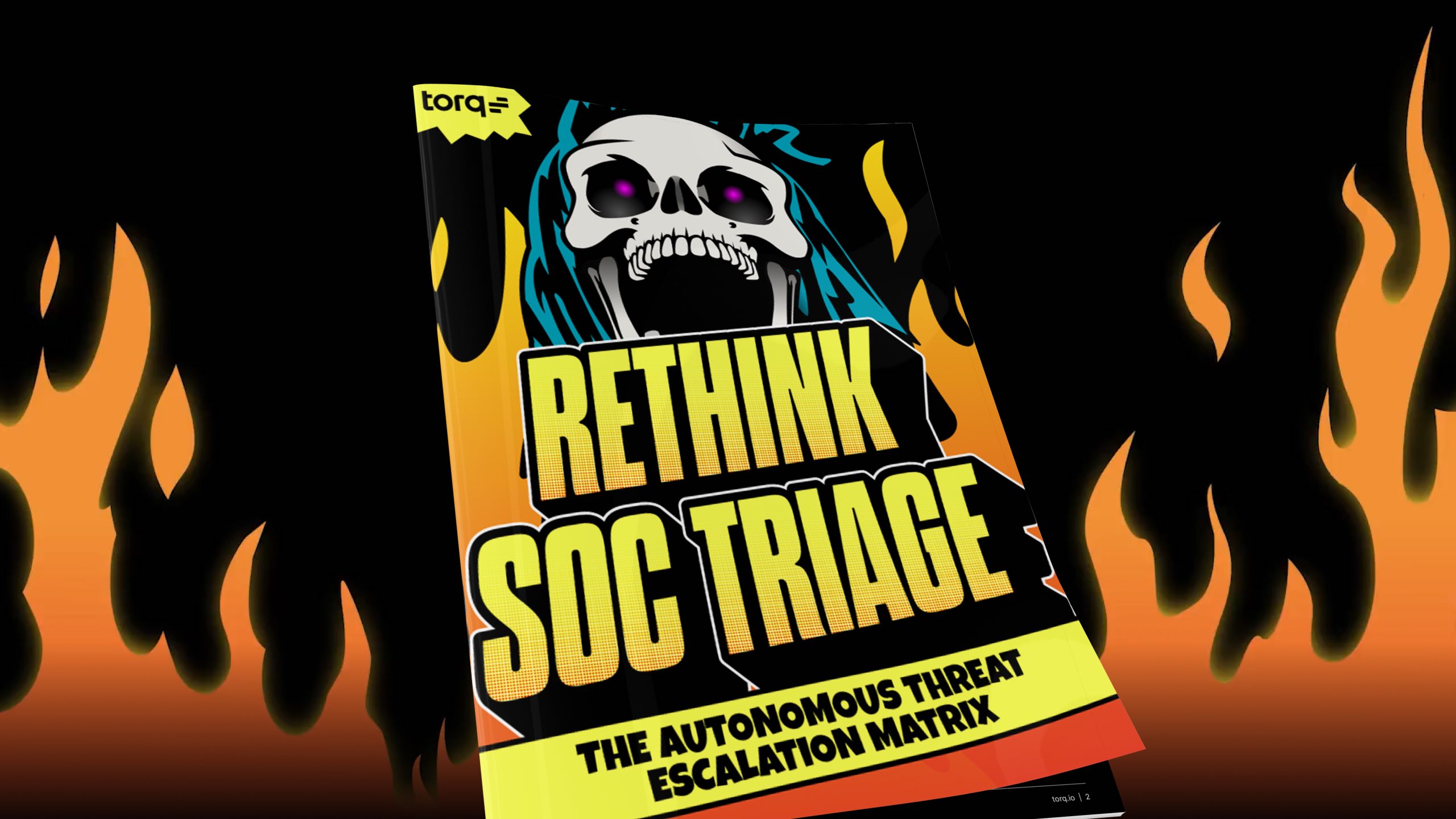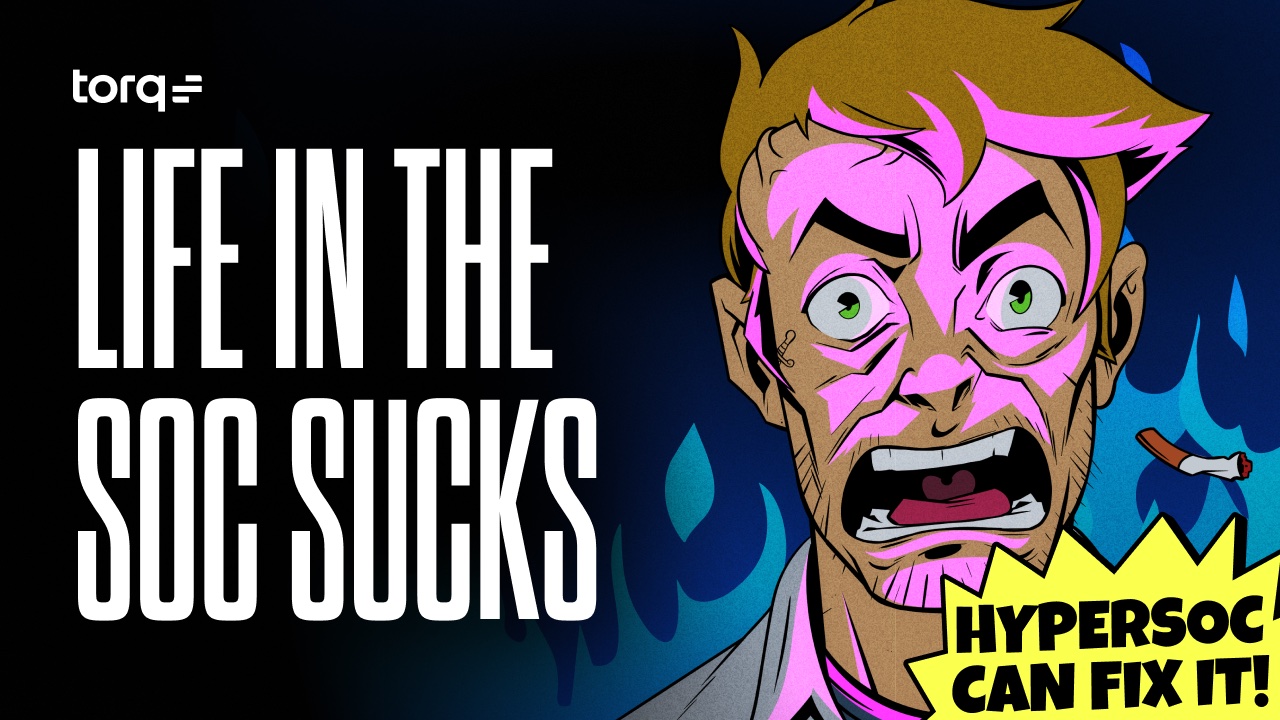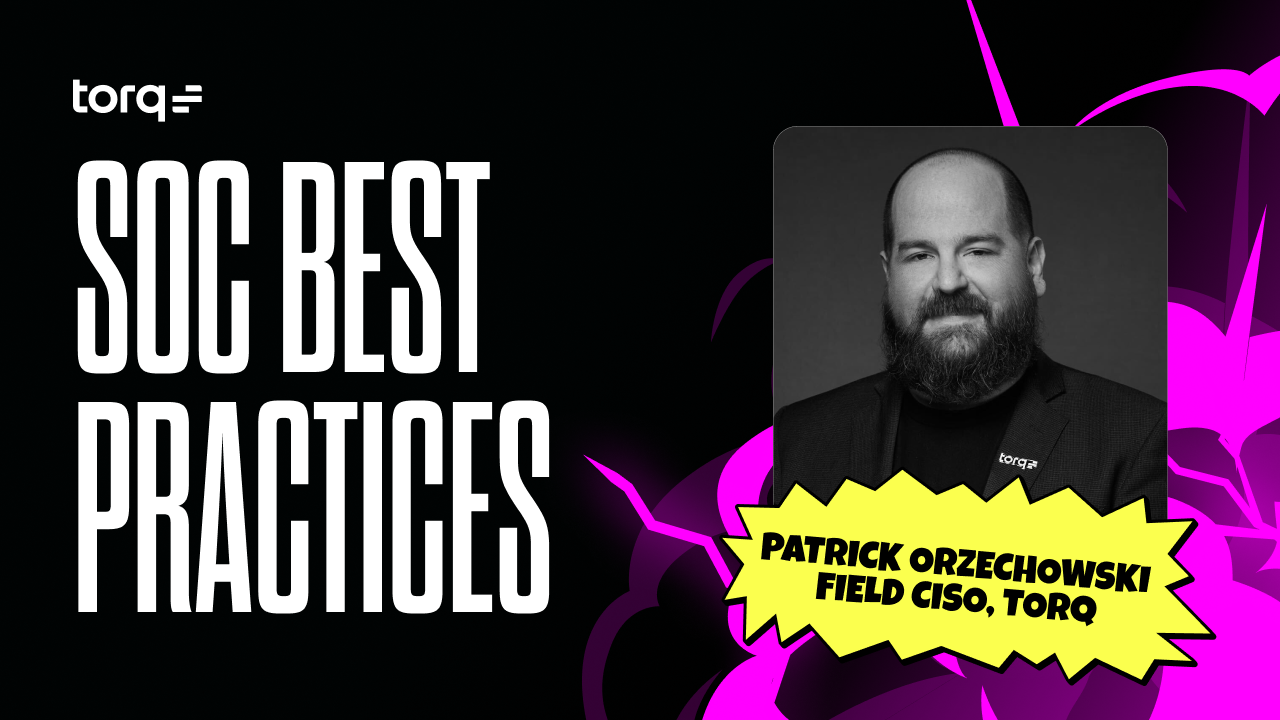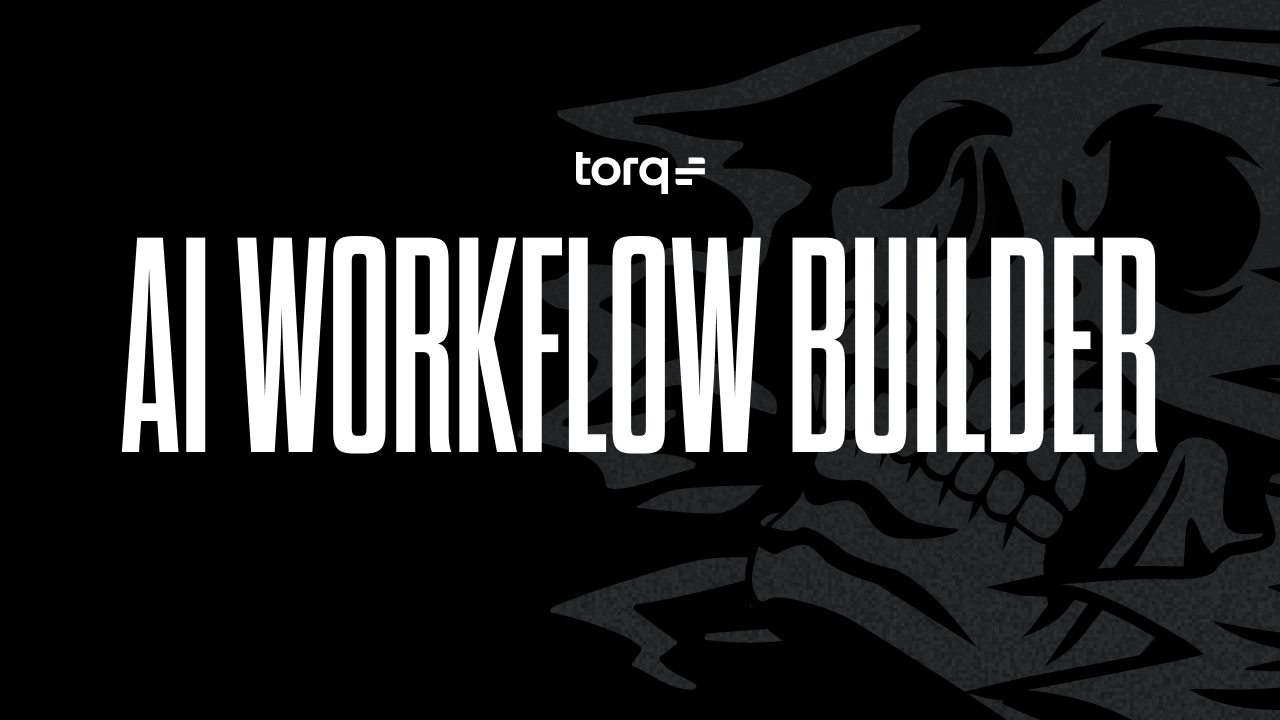Contents
Get a Personalized Demo
See how Torq harnesses AI in your SOC to detect, prioritize, and respond to threats faster.
If you’re a CISO, your holiday season is probably defined by two things: family time and anxiety. Cybercriminals don’t celebrate the holidays. They know your SOC staff is running on fumes, paid-time-off accruals, and maybe checking 3am Slack messages from a ski slope. They strike when you are weakest.
The numbers aren’t entirely surprising: 86% of ransomware victims were targeted on a holiday or weekend, exploiting the fact that most organizations cut SOC coverage by half — and some leave their operations unstaffed altogether.
Security models that rely on human speed, human availability, and human judgment for Tier-1 and Tier-2 triage are the biggest, most unmanaged risk on your books. This holiday season, stop compensating for the human element and start building a defense that runs autonomously.
Four Holiday “Gifts” Hackers Leave for Understaffed SOCs
If you rely on traditional SOAR or any other legacy solution, you are exposing your business to four critical failures the moment your senior staff goes on PTO.
1. The Suspicious Login Stocking Stuffer
Your analysts are drowning in noise. The few running the skeleton crew during the holidays now have to triage a spike in “suspicious activity” from employees logging in from exotic vacation spots — the VPN alert paradox. It’s not just a workload issue; it’s a trust issue. Can that analyst, stressed and alone, tell the difference between a legitimate login from an employee in Thailand and an attacker in the same time zone?
The Autonomous Fix: Torq Hyperautomation™ doesn’t care if an alert comes in at 10am on a Tuesday or 11pm on Christmas Eve. Agentic AI handles all Tier-1/Tier-2 triage, enrichment, and context correlation instantaneously, ensuring only validated, high-priority incidents wake the on-call analyst.
2. The Silent Night Breach
The cost of a breach is directly tied to the Mean Time to Contain (MTTC). Attackers move laterally in minutes; if your containment relies on a single, sleepy analyst on-call, your MTTC goes from hours to days. Relying on a human to wake up, log in, and manually coordinate remediation is a financial and compliance liability. Human-led containment is simply a vulnerability during peak-risk times.
The Autonomous Fix: The autonomous SOC guarantees machine-speed containment (e.g., firewall block, identity lock, endpoint quarantine) for common and known threats, regardless of who is in the chair.
3. The Broken Playbook Fruitcake
Your legacy SOAR workflows are brittle, coded flows that rely on institutional knowledge to run. The moment the senior analyst who wrote the custom Python glue code is on a beach, that playbook is effectively dead — and so is your defense. A dependency on custom code is a dependency on the individual. You can’t afford to have your security posture tied to a single person’s vacation schedule.
The Autonomous Fix: Our no-code, API-first approach and multi-agent system architecture ensure all automated workflows are visible, centrally governed, and runnable by anyone.
4. The Compliance Ghost of Christmas Past
Regulations like SOC2, DORA, and the SEC’s disclosure rules don’t pause in December. Missing a critical incident due to understaffing is still a compliance failure, carrying massive potential fines and career risk. You need an audit trail that can prove, without human intervention, that an incident was detected, investigated, and contained according to policy.
The Autonomous Fix: Torq’s team of AI Agents automatically documents every detection, decision, and remediation step — creating a real-time audit trail you can present to auditors, not apologies to the board.
How Torq HyperSOC™ Saves the Holiday SOC
The CISO’s job isn’t to perfectly staff the SOC 24/7/365; it’s to build a defense that doesn’t require perfect staffing. You need to offload the reliability problem from your people to a platform designed for autonomy: Torq HyperSOC™.
Here’s how to stop staffing the gap and start automating the vulnerability, ensuring 24/7/365 coverage whether your team is full-stack or on skeleton crew.
Guaranteed Coverage with AI-Driven Response
Implement HyperSOC to handle all high-volume, low-fidelity incidents autonomously. Our agentic AI reasons, plans, and executes containment actions across your environment in milliseconds. The autonomous SOC guarantees the highest standard of defense when your analysts are away, ensuring only validated, high-severity incidents require human judgment.
No-Code Resilience for Any Team
Your defense shouldn’t depend on whoever wrote that Python script three holidays ago. Migrate all your fragile, code-based SOAR logic to our AI Workflow Builder. Our no-code architecture ensures all automated workflows are visible, centrally governed, and executable by anyone (or anything) — guaranteeing operational continuity.
Automated Compliance and Audit Trails
Use agentic AI not just to respond, but to generate the auditable reasoning trail for every autonomous action. This ensures compliance, even when no human was involved. You can confidently report to the board that containment was machine-speed, policy-driven, and thoroughly documented.
Give Analysts the Gift of Time Back
Every minute you automate is a minute your analysts get back — for strategy, for innovation, or for an actual holiday. Torq customers routinely save hundreds of analyst hours per quarter while improving MTTR, coverage, and team morale.
This holiday, trade burnout for balance and let Torq keep watch while your team finally gets a silent night.
Sleep Peacefully This Holiday Season — We’ll Leave the Torq On
This holiday season, give your team the gift of a break — and give your board the gift of guaranteed security. The autonomous SOC is the only system that truly operates 24/7/365. Stop settling for a security posture that is only as strong as the one analyst pulling the graveyard shift.
Don’t wait until the New Year to fix last year’s biggest problem.



